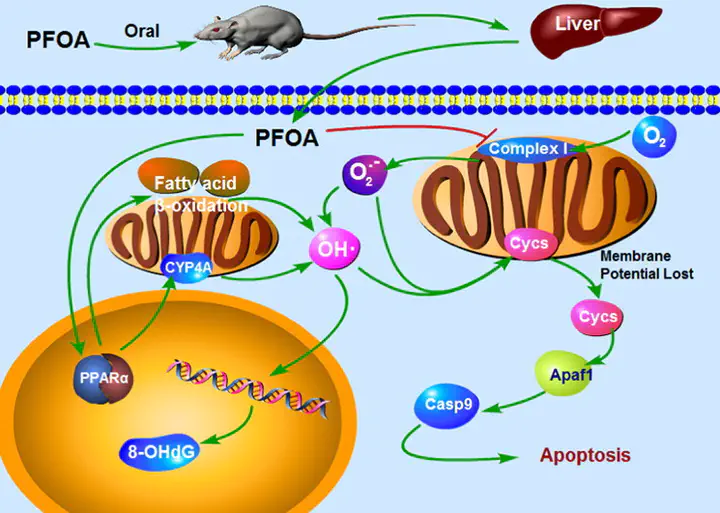Molecular mechanisms of PFOA-induced toxicity in animals and humans: Implications for health risks

Abstract
As an emerging persistent organic pollutant (POP), perfluorooctanoate (PFOA) is one of the most abundant perfluorinated compounds (PFCs) in the environment. This review summarized the molecular mechanisms and signaling pathways of PFOA-induced toxicity in animals and humans as well as their implications for health risks in humans. Traditional PFOA-induced signal pathways such as peroxisome proliferating receptor alpha (PPARα), constitutive androstane receptor (CAR), farnesoid X receptor (FXR), and pregnane-X receptor (PXR) may not be important for PFOA-induced health effects on humans. Instead, pathways including p53/mitochondrial pathway, nuclear lipid hyperaccumulation, phosphatidylinositol 3-kinase-serine/threonine protein kinase (PI3K-AKT), and tumor necrosis factor-α/nuclear factor κB (TNF-α/NF-κB) may play an important role for PFOA-induced health risks in humans. Both in vivo and in vitro studies are needed to better understand the PFOA-induced toxicity mechanisms as well as the associated health risk in humans.